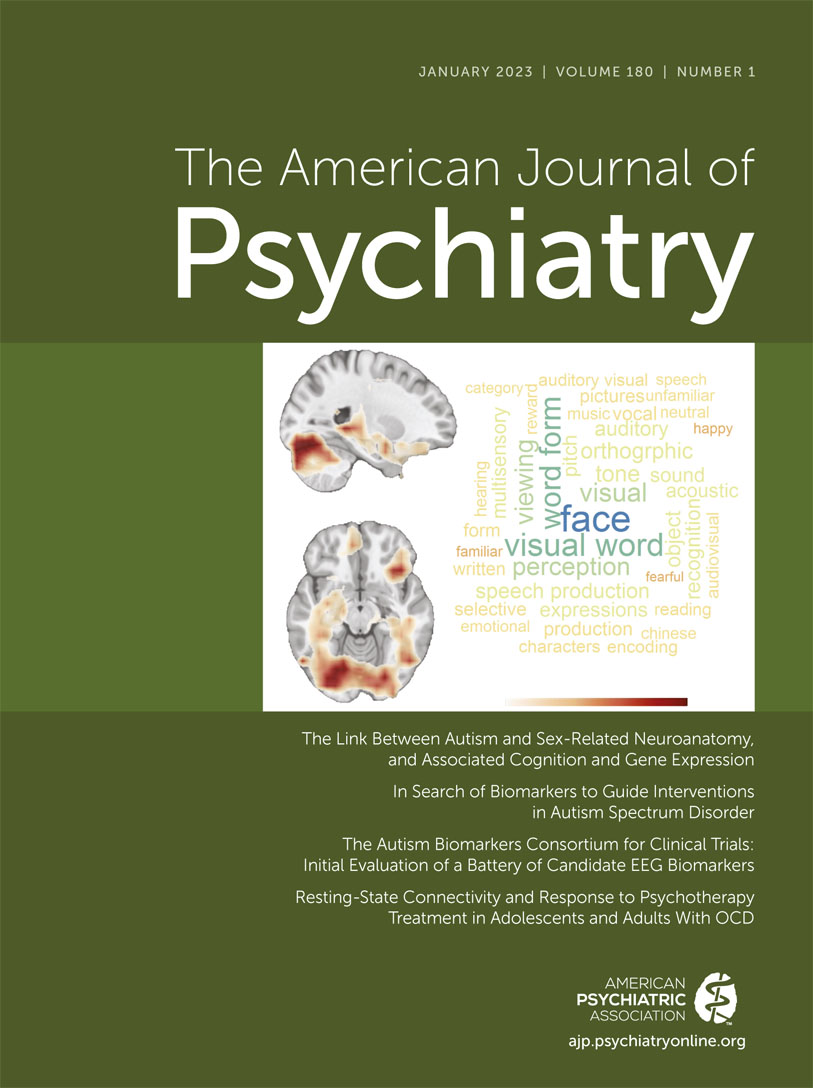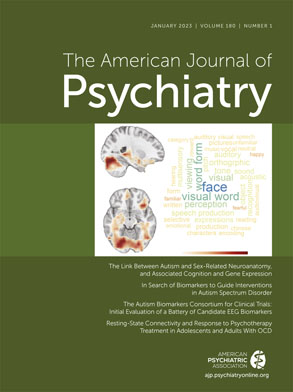The first medical description of what is currently labeled attention deficit hyperactivity disorder (ADHD) was published as early as the 18th century. The German physician Melchior Adam Weikard and the Scottish physician Alexander Crichton described individuals suffering from attention deficit, increased distractibility, and reduced stamina (
1). This symptom complex defines the attention deficit disorder subtype without hyperactivity in the currently used DSM-5 (
2). However, George Frederick Still was the first physician to publish an article in a medical journal, the
Lancet, about children with symptoms of attention deficit, self-regulation problems, and learning difficulties, in 1902. Charles Bradley then treated children who were described as hyperactive with amphetamine sulfate. Since 1978, ADHD has been recognized as a childhood disorder entity in ICD-9, and since 1992, ICD-10 has also recognized persisting ADHD into adulthood (
3).
The underlying causes of ADHD, however, were unclear for nearly 200 years. Since the beginning of the 21st century, it is largely validated that ADHD is a disorder with a heritability of about 80%, estimated from twin and family studies (
4). However, the first genetic studies that investigated several candidate genes were disappointing in that there were hardly any gene candidates with high effect sizes for the risk of developing ADHD (
4). Linkage studies and genome-wide association studies (GWASs) investigating common genetic variants such as single-nucleotide polymorphisms (SNPs) were conducted, and the findings hinted at several gene loci being associated with ADHD, but each risk variant conveyed only a rather small risk (
5,
6). In the meantime, the first genome-wide significant genetic loci for ADHD have been reported, and meta-analysis of GWASs indicate that about 22% of genetic liability is caused by SNP heritability (
7,
8).
Polygenic risk scores (PRSs) summarize the risk alleles of an individual and weigh the effect size in an independent GWAS. Using PRSs seems to be useful to capture the synergistic effects of common risk variants of low effect sizes and to identify individuals carrying a higher genetic burden of those common variants (
9). Moreover, more rare variants, such as copy number variants (CNVs), are also shown to play a role in ADHD pathogenesis, since there is a significantly increased burden in individuals with ADHD compared with the general population (
10).
However, not only genetic but also environmental and developmental risk factors and their interaction are suggested to contribute to the onset of ADHD (
11). But the investigation of the causality of environmental and developmental risk factors in ADHD is even more complex. Earlier studies investigating, for example, the impact of smoking during pregnancy on ADHD risk in the exposed child often did not take the mother’s psychopathology or genetic risk into account (
12). The same is true for the effect of breastfeeding on ADHD risk (
13). Better-designed studies already hinted that the genetic risk of the mother might be the causal factor rather than the harmful effects of smoking in ADHD (
14). Only few studies have been published so far looking at pregnant women with ADHD and mother-child interaction in early infancy in mothers (and fathers) with ADHD. Early data hint that women with ADHD are at a greater risk of smoking, drinking alcohol, and using illegal drugs as well as greater risk of pregnancy and birth complications, compared with the general population (
15). Therefore, it is highly challenging to disentangle the genetic from the environmental and developmental risk factors.
For example, preterm birth has been shown to have a relatively consistent association with an increased ADHD risk, but the direction of the effect is less clear (
16). Does prematurity lead to ADHD symptoms, or do fetuses with a genetic ADHD risk tend to be born prematurely for unknown biological reasons? Or, as a third possibility, are mothers with ADHD more prone to give birth to premature infants as a result of increased psychosocial stress and unhealthy lifestyle and the causal link is rather the transmission of the genetic risk variants? Finally, is there an interaction or interplay between those different risk factors?
To make it even more complex, several potential environmental risk factors (in pregnancy or after birth) may also share genetic risk with ADHD, such as obesity, gestational diabetes mellitus, autoimmune disorders, allergic disorders, and so on, and there are hints that polygenic liability of ADHD is associated with an increased risk of exposure to environmental ADHD risk factors in individuals without an ADHD diagnosis as well.
A 2019 study by Leppert et al. (
17) investigated mothers without a clinical ADHD diagnosis but carrying risk alleles associated with ADHD, compared with mothers without those risk alleles. Of most interest was the fact that the mothers with ADHD risk alleles had increased lifestyle-related negative exposures, such as more mental health issues and pregnancy complications and increased markers of unhealthy nutritional status. However, that study was unable to show a significant association of preterm birth with maternal ADHD genetic risk or with ADHD risk genes in the exposed children.
In this issue of the
Journal, Brikell et al. (
18) report on a study of the interaction between ADHD PRS, ADHD diagnosis, and environmental risk factors. They studied the association of 24 environmental and developmental risk factors and ADHD polygenic risk scores in a large cohort of 13,697 ADHD case subjects and 21,578 control subjects from a general population sample. There were three times more affected males than females in the sample, which needs to be mentioned, as we estimate that rates of adult ADHD are only 1.5 times higher in men compared with women in population-based studies. Brikell et al. included birth-related, somatic, and psychosocial risk factors, including parental mental disorder diagnoses, to evaluate potential gene-environment interactions. Not surprisingly, they could confirm a significant association of ADHD PRS with ADHD diagnosis. The higher the PRS burden, the greater the ADHD risk, which is confirmed in other studies (
19). It is most interesting that in the general population sample, the authors could show a significant association of ADHD PRS with half of the 24 environmental risk factors. Small for gestational age, maternal autoimmune disorder, having had at least one infection, having had five or more infections, and a history of mild traumatic brain injury (TBI) were significantly associated. Furthermore, ADHD PRS was significantly associated with most of the psychosocial risk factors, such as income in the lowest quintile, low education level, living in a single-parent household during the first 5 years of life, being under age 20 at birth of index child, and parental history of mental disorder. Nineteen of the 24 risk factors were associated with a diagnosis of ADHD. The most significant associations were reported for low birth weight, epilepsy, and low parental education. Adjusting for ADHD PRS load and parental mental disorder diagnosis did not largely change the findings.
Surprisingly, Brikell et al. only found a tendency of gene-environment interaction between ADHD PRS and four of the 24 risk factors, namely, maternal autoimmune disease, TBI, paternal unemployment, and lower paternal age at birth of index child. This suggests that individuals who are burdened with a higher ADHD PRS load and are additionally exposed to one of these four environmental risk factors might have a higher probability of developing ADHD. The only gene-environment interaction that survived false discovery rate correction for multiple comparison, however, was the interaction of maternal autoimmune disease and high ADHD PRS load.
The results from the Brikell et al. study are very promising and point out the importance of what data should be included in future studies on the etiopathology of ADHD. They strengthen the evidence of the heterogeneity of ADHD disease mechanisms and point toward the possibility of disentangling genetic and environmental risk factors as well as studying their complex interplay and interactions. Recent studies give first hints as to how environmental factors can influence gene expression by changes in the epigenome, but this field is only in its infancy (
20). More insight into ADHD pathomechanisms will reveal targetable risk factors that then can be addressed by interventions, and the causality will finally be proven in future interventional studies.

